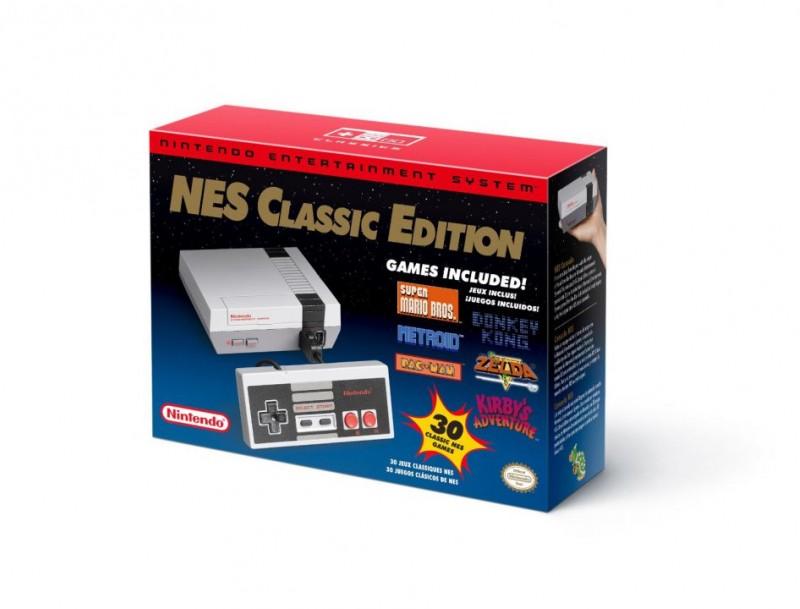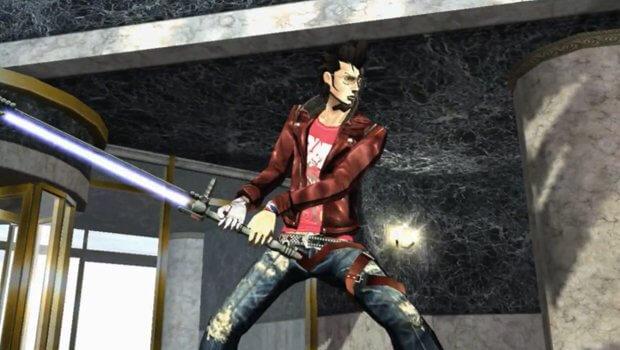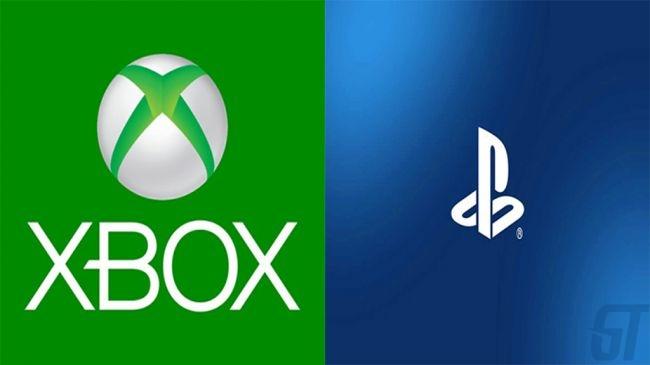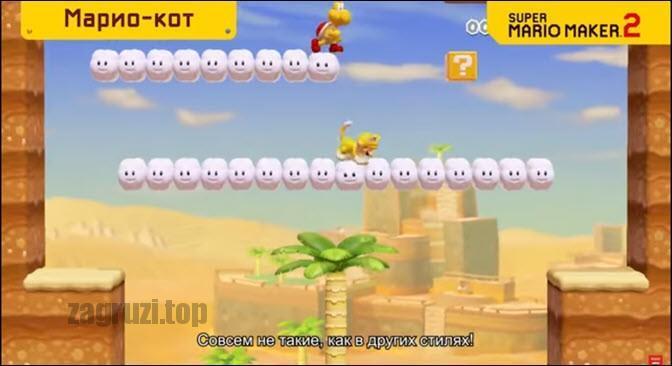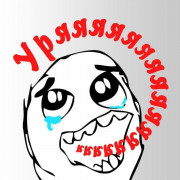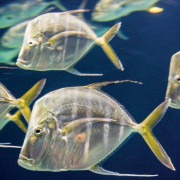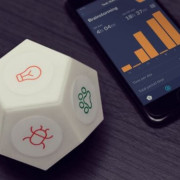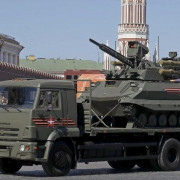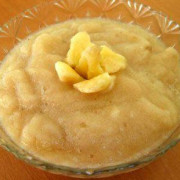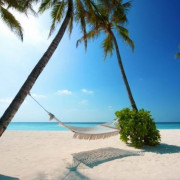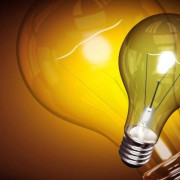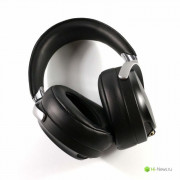Nintedno entertainment system
Содержание:
- Кризис индустрии видеоигр
- Популярные видеоигры
- Контроллер
- Technical specifications
- Peripherals
- Games
- References
- Reception and Legacy
- GameCube
- Bootlegs
- История
- Характеристики и особенности.
- Appearances in the Mario franchise[edit]
- Технические характеристики
- Variations
- Краткая справка
- Switch
- Дополнительные аксессуары NES
- Issues
Кризис индустрии видеоигр
Тогда мало кто верил в то, что Nintendo удастся закрепиться в США. Ведь в 1983 году на рынке игровых консолей случился ужасный кризис. Случилось это, прежде всего, из-за перенасыщения американского рынка различными игровыми консолями, которые предлагали игрокам фактически одинаковые игры. Причём игры эти были настолько низкого качества, что современный человек даже из любопытства не обратил на них никакого внимания. Вдобавок ко всему очень быстро рос спрос на персональные компьютеры, которые во многом опережали игровые консоли по своей функциональности. Стечение этих обстоятельств привело к тому, что большая часть американских разработчиков видеоигр попросту обанкротились.
Все прекрасно понимали, что надо что-то менять. Менять решительно и полностью. Но никто не знал, как это реализовать на деле. Никто, кроме Nintendo. Именно они внезапно появились на чужом для себя рынке и навсегда изменили индустрию видеоигр, привнеся в неё не просто новую консоль, а целую новую японскую философию, подкупающую потребителей высочайшим качеством продукции и, что самое главное, красивыми и безумно увлекательными видеоиграми.
Популярные видеоигры
NES не стала бы популярной, если бы не имела в своём арсенале достаточного количества впечатляющих видеоигр. В этом плане у японской консоли было всё в полном порядке. Nintendo Entertainment System распространялась в США в виде двух разных комплектов. Deluxe Set стоимостью 249 долларов включал в себя саму консоль, два контроллера, световой пистолет NES Zapper, маленького робота R.O.B., о котором я вам расскажу чуть позже, а также две игры – Gyromite и Duck Hunt. Второй комплект стоимостью 99 долларов назывался Control Deck и содержал в себе лишь консоль, два геймпада и игру Super Mario Bros. (можно было приобрести консоль без игры, сэкономив при этом около 10 долларов).
Одновременно с запуском консоли на рынок поступили 18 игр для неё: 10-Yard Fight, Baseball, Clu Clu Land, Donkey Kong Jr. Math, Duck Hunt, Excitebike, Golf, Gyromite, Hogan’s Alley, Ice Climber, Kung Fu, Mach Rider, Pinball, Stack-Up, Super Mario Bros., Tennis, Wild Gunman и Wrecking Crew. Этого было вполне достаточно для того, чтобы заворожить американскую аудиторию, которая тогда была просто подавлена ужасными играми, разработанными в период кризиса 83-го года.
Контроллер
Контроллер Famicom. Второй контроллер не содержит кнопки Start и Select, но содержит микрофон.
Контроллер NES. В отличие от Famicon, второй контроллер не имеет микрофона, но были возвращены кнопки Start и Select.
Контроллеры, использовавшиеся в NES и Famicom, имели форму прямоугольника при взгляде сверху с простым расположением пяти кнопок: две круглые кнопки, обозначенные как A и B, кнопка Start, кнопка Select, и крестовина. Геймпады были спроектированы Гумпэем Ёкои взамен более массивных джойстиков, которые использовались в более ранних игровых системах. Первоначальная версия геймпада, выпускавшаяся до отзыва консоли в 1984 году, имела квадратные кнопки A и B.
Контроллеры Famicom имели простой внешний вид, хотя в них были и некоторые особенности, которых не было в геймпадах для NES, например, микрофон.
Изначально оригинальная модель Famicom имела два контроллера, с припаянными кабелями сзади к консоли. У второго контроллера не было кнопок Start и Select, зато имелся небольшой микрофон, который использовался в сравнительно небольшом количестве игр. У NES геймпады были свободно отсоединяемыми: на передней панели консоли имелось два семиконтактных разъема для контроллеров. Геймпады, входившие в комплект с NES (две штуки), были одинаковы — у второго геймпада не было микрофона, но зато имелись кнопки Start и Select.
Для системы было выпущено несколько дополнительных контроллеров, созданных для использования в некоторых специфических играх, хотя сколько-нибудь популярными из устройств стали лишь редкие из них. Среди них были: NES Zapper (световой пистолет), Power Pad, R.O.B. (робот, который начинал шевелить руками, когда его поворачивали лицом к телевизору) и перчатка-геймпад Power Glove. Famicom имела порт расширения DB-15, расположенный спереди консоли и предназначенный для подключения большинства вспомогательных устройств. На NES эти специальные контроллеры обычно подключались к одному из двух портов, расположенных спереди приставки.
Ближе к концу жизни NES, с выпуском AV Famicom и NES 2 со слотом для картриджа наверху, внешний вид игровых контроллеров слегка изменился. Хотя раскладка кнопок осталась той же, вместо прямоугольной формы использовался несколько более удобный выгнутый дизайн, напоминали они контроллеры для SNES. Кроме того, фирма Nintendo отказалась от припаянных контроллеров в пользу отсоединяемых. Как и у NES, контроллеры AV Famicom имели эргономичную форму, но шнур у них был более коротким: один метр против двух у NES.
В те годы геймпад NES стал одним из наиболее узнаваемых символов системы. Компания Nintendo скопировала внешний вид контроллера в некоторых позднейших продуктах, от разнообразных сувенирной продукции до специальной версии портативной игровой консоли Game Boy Micro, выпускавшейся ограниченным тиражом. Кроме того, внешний вид геймпада имеет немало общего с внешним видом карманных электронных игр Nintendo Game&Watch, также разрабатывавшихся Гумпэем Ёкои.
Technical specifications
|
|
|
| Processor | Ricoh 5A22, based on a 16-bit 65c816 core |
| Clock Rates |
Input: 21.47727 MHzBus: 3.58 MHz, 2.68 MHz, or 1.79 MHz Input: 21.28137 MHzBus: 3.55 MHz, 2.66 MHz, or 1.77 MHz |
| Buses | 3.55 MHz, 2.66 MHz, or 1.77 MHz |
| Other features |
|
|
|
|
| Resolutions | Progressive: 256×224, 512×224, 256×239, 512×239Interlaced: 512×448, 512×478 |
| Pixel depth | 2, 4, 7, or 8 bpp indexed; 8 or 11 bpp direct |
| Total colors | 15-bit RGB (32,768 colors) |
| Colors per sprite | 16 (4-bit) |
| Sprites | 128, 32 max per scanline; 8×8 to 64×64 pixels, 272 max per line |
| Backgrounds | Up to 4 planes; each up to 1024×1024 pixels |
| Effects | •Pixelization (mosaic) per background•Color addition and subtraction•Clipping windows (per background, affecting color, math, or both)•Scrolling per 8×8 tile•Mode 7 matrix operations |
|
|
|
| Processors | Sony SPC700, Sony DSP |
| Clock Rates | Input: 24.576 MHz |
| SPC700 | 1.024 MHz |
| Format | 16-bit ADPCM, 8 channels |
| Output | 32 kHz 16-bit stereo |
| Effects | •ADSR envelope control•Frequency scaling and modulation using Gaussian interpolation•Echo: 8-tap FIR filter, with up to .24s delay•Noise generation |
|
|
|
| Main RAM | 128 kB |
| Video RAM | 64 kB main RAM512 + 32 bytes sprite RAM256 × 15 bits palette RAM |
| Audio RAM | 64 kB |
Peripherals
Like the NES before it, a diverse set of accessories were released for the Super Nintendo over the course of its lifetime. Some of the peripherals, such as the Super Scope, were evolutions of NES accessories (in this case, an evolution of the NES Zapper), while others were wholly unique to the system such as the SNES Mouse. The Super Nintendo Entertainment System controller is a huge improvement over the Nintendo Entertainment System controller.
Super Famicom.
SNES (North America).
SNES (EU/AU).
Super Famicom Jr.
SNES-101.
SF1.
SNES CD-Rom (unreleased).
Add a photo to this gallery
It features two shoulder buttons (a first for a video game controller), four face buttons (two more than the NES controller had), a D-pad (pioneered by the Game & Watch game Donkey Kong), and a start and select button. The controller itself is often called a «dog-bone». This controller style has become very popular among aftermarket controller companies, and the button selection and layout is the basis for many other console controllers.
- Main article: SNES CD-Rom
The SNES-CD was a CD-ROM drive add-on for the SNES, developed jointly by Nintendo and Sony. The device was eventually made standalone and revealed at CES 1991. However, Nintendo had by then made a deal with Philips to create the CD drive, and attempts by Nintendo and Sony to repair relations failed. The Philips CD drive eventually became the Philips CD-i, and the Sony standalone device eventually became the Sony PlayStation.
Games
- Main article: List of Super Nintendo Entertainment System games
Super Mario World is the best selling SNES game.
The Super Nintendo Entertainment System is popular due to its wide selection of triple-A titles from Nintendo and numerous third parties. Some of the most popular games released on the system by Nintendo include Super Mario World, Donkey Kong Country and its sequels, Super Mario Kart, The Legend of Zelda: A Link to the Past, Star Fox, Super Mario World 2: Yoshi’s Island, F-Zero, Super Metroid, Pilotwings, and others.
Third parties were also largely successful on the SNES, with Square, Enix, Capcom, Midway and others striking it big with titles such as Final Fantasy IV-VI, Chrono Trigger, Dragon Quest VI, NBA Jam, Street Fighter II (and its various incarnations), Disney titles and more.
With the release of the Game Boy Advance, many classic SNES titles were ported over to the handheld, once again receiving a large amount of success. Some of the SNES games re-released as Game Boy Advance titles include Super Mario Bros. 2-3, Super Mario World 1-2, The Legend of Zelda: A Link to the Past, the entire SNES Final Fantasy library, all three Donkey Kong Country games, and others.
The Nintendo DS was also used to recreate classic SNES titles such as Chrono Trigger, Kirby Super Star Ultra and Final Fantasy IV being released to wide acclaim and large sales, proving that even though the games were over 10 years old at the time, they were still very enjoyable. Kirby Super Star Ultra, a remake of Kirby Super Star, went on to sell more than the other two Kirby games for the DS.
Top ten best-selling SNES games
- Main article: List of best-selling Super Nintendo Entertainment System games
The following are the top ten best-selling games in all the regions.
- Super Mario World — 20.61 million copies
- Super Mario All-Stars — 10.55 million copies
- Donkey Kong Country — 9.3 million copies
- Super Mario Kart — 8.76 million copies
- Street Fighter II: The World Warrior — 6.3 million copies
- Donkey Kong Country 2: Diddy’s Kong Quest — 5.15 million copies
- The Legend of Zelda: A Link to the Past — 4.61 million copies
- Super Mario World 2: Yoshi’s Island — 4.12 million copies
- Street Fighter II Turbo — 4.1 million copies
- Donkey Kong Country 3: Dixie Kong’s Double Trouble! — 3.51 million copies
References
| Nintendo consoles | |
|---|---|
| Home consoles | Color TV Game 6 (1977) | Color TV Game 15 (1978) | Color TV Racing 112 (1978) | Color TV Game Block Breaker (1979) | Computer TV Game (1980) | C1 Nintendo Entertainment System TV (1983) | Famicom (1983) | Sharp Nintendo Television (1983) | Super Famicom (1990) | SF-1 Super Nintendo Entertainment System TV (1990) | Nintendo Entertainment System (Model NES-101) (1993) | AV Famicom (1993) | Nintendo 64 (1996) | Super Nintendo Entertainment System 2 (1997) | Super Famicom Jr. (1998) | Nintendo GameCube (2001) | Panasonic Q (2001) | IQue Player (2003) | Wii (2006) | Wii U (2012) |
| Game Boy line | Game Boy (1989) | Super Game Boy (1994) | Game Boy Pocket (1996) | Game Boy Light (1998) | Super Game Boy 2 (1998) | Game Boy Color (1998) | Game Boy Advance (2001) | Game Boy Advance SP (2003) | Game Boy Advance SP Mark II (2005)| Game Boy Micro (2005) |
| Nintendo DS/Nintendo 3DS line | Nintendo DS (2004) | Nintendo DS Lite (2006) | Nintendo DSi (2008) | Nintendo DSi XL (2009) | Nintendo 3DS (2011) | Nintendo 3DS XL (2012) | Nintendo 2DS (2013) | New Nintendo 3DS (2015) | New Nintendo 3DS XL (2015) | New Nintendo 2DS XL (2017) |
| Nintendo Switch line | Nintendo Switch (2017) | Nintendo Switch Lite (2019) |
| Other handhelds | Game & Watch (1980-1991) | Virtual Boy (1995) | Pokémon Mini (2001) |
| Add-ons | Family Computer Disk System (1986) | Satellaview (1993) | Super Nintendo Entertainment System CD (Canceled 1997) | 64DD (1999) | Game Boy Player (2003) | Panasonic Q Game Boy Player (2003) |
| Other products | Arcade games | Mobile games |
Reception and Legacy
Today the Super Nintendo Entertainment System is looked back at with high regard. When critics and publications list the greatest video game systems of all time, the Super Nintendo is commonly near the top. CNET columnist Don Reisinger wrote an article titled «The SNES is the greatest console of all time», listing its strengths over other systems that also regularly hold that title including the original Nintendo Entertainment System, the SEGA Genesis, and the PlayStation, saying «… think of the world the SNES spawned. Instead of releasing a veiled copy of the NES to get in on the fight with Sega earlier, Nintendo created a follow-up that was worthy of the ‘Super’ moniker and gave developers the license they needed to create the legendary titles that we still play today.»
During the seventh generation, IGN posted an article on their website listing the top twenty five video game consoles. The Super Nintendo Entertainment System was listed as number four, being surpassed only by the PlayStation 2 (3), Atari 2600 (2), and Nintendo Entertainment System (1). IGN highly praised the SNES, stating that «when it comes to a pure concentration of AAA titles, few consoles – if any – can stand up to the Super NES.». In the article, Nintendo writer Craig Harris claimed that the SNES was his first system that he bought on day one, and that he spent more time playing Pilotwings than Super Mario World.
Chris Buffa of GameDaily.com listed the Super Nintendo Entertainment System as the fifth best system of all time in 2008, saying «when it comes to a pure concentration of AAA titles, few consoles – if any – can stand up to the Super NES.»
The Super Nintendo Entertainment System was the last console to have a different design built for American and Japanese audiences. A trend that didn’t last long, Lance Barr claims that building a unique design for the major territories had its ups and its downs, saying «Individually designing a product for a given market would definitely appeal to more consumers, and would be seen as having a more current, in style look.» He went on to say that while the designs for each market are similar, there are occasionally subtle differences, such as in the color of the system. This is especially evident in Nintendo’s newer handhelds and, to a lesser extent, accessories.
Sales
The Super Nintendo Entertainment System performed phenomenally, selling 49.10 million units worldwide (23.35 million in North America and 17.17 million in Japan). The Super Nintendo’s main competitor was SEGA’s Genesis system, which became popular due to SEGA’s advertising and the release of Sonic the Hedgehog, as well as several «mature» titles intended for older gamers. Some credit the SNES’s success over the Genesis to Capcom’s Street Fighter 2 video game, which took over a year to port to the Genesis. Another important factor was the fact that Sega discontinued the Genesis far earlier than the SNES, as while the Genesis died around 1997-1999, the SNES remained popular well into the year .
The games released for the Super Nintendo Entertainment System also performed admirably. Super Mario World is the best selling game for the system, partly due to the fact that in several territories it was packaged with the system. Donkey Kong Country and Super Mario Kart proved to be the most successful stand alone titles at an estimated eight million copies sold each. Capcom sold millions of copies of its Street Fighter II series, of which several iterations were released for the SNES. Capcom also released the game for the Genesis, though it wouldn’t release until a year after the SNES version launched.
GameCube
Еще одна попытка Nintendo угнаться за графическими изысками потерпела крах. GameCube поступила в продажу в 2001 году, но рынок уже был захвачен Xbox и PlayStation 2. Nintendo нужно было очень постараться вклиниться в обстановку того времени. Очевидно, не получилось — всего лишь 20 миллионов проданных экземпляров.
Тут вам снова и мощный процессор, и куча оперативной памяти, и даже выделенный графический чип от ATI, просто бери и пользуйся. Но Nintendo снова оказалась без поддержки сторонних компаний из-за своей панической боязни пиратства. Да, GameCube использовал диски, но то был специальный формат, разработанный совместно с Panasonic. DVD был шесть раз вместительнее, конкуренты в лице Sega Dreamcast, Sony PlayStation 2 и Microsoft Xbox в основном стоили дешевле, а инструментарий для разработки кому попало не выдавали. Это был не то, чтобы провал, но никаких инноваций GameCube предоставить не смог. Не считать же ручку для переноски инновацией?
Bootlegs
A bootleg version of Rockman for the Disk System. The label states «Intend», while the embossing on the disk reads «NinFendo».
All disk cards for the system featured the word «NINTENDO» molded at the very bottom. The «I» and the second «N» on the disks activated a switch that authenticated them and allowed the games to run. However, this was easily worked around, as the molding could very easily be copied.
Since only two letters had to be correct, many other names which did not infringe on Nintendo’s name trademark could be used. Examples used include NinFendo, Ninten, Ninjendo, Intend, Ninendo, Niniendo, and Niniendd. Eventually the producers of these bootleg disks managed to mold only the necessary letters with no need for a fake «Nintendo» logo.
История
Famicom
После выпуска некоторых понг-консолей в 1977 году, компания Nintendo решила о создании новой консоли. Эффективность в написании игр и низкая стоимость производства консоли заключалась в том, что для получения информации и данных в NES осуществлялось без проверки, запроса, и тщательной передачи в оперативную память, что было у других приставок того времени. Из-за новой технологии и моментальной загрузки с картриджа можно было достичь хорошей графики, анимации и звука. Консоль появилась в продаже в середине лета 1983 года, однако продажи шли медленно, а данную консоль критиковали из-за ненадёжности и сбоя работы. После повторного выпуска консоли с переставленной материнской платой, продажи приставки резко выросли, и в 1984 году Famicom стала наиболее продаваемой игровой консолью на Японском рынке
После ошеломительной популярность консоли в Японии, Nintendo обратила внимание на Американский рынок.
Характеристики и особенности.
С технической стороны, Super Famicom/SNES оказалась довольно нестандартной приставкой, что на первых порах стало настоящей проблемой для разработчиков игр. В основном, дело было в довольно слабом центральном процессоре Ricoh 5A22, который был создан специально под нужды новой приставки. Малая мощность процессора была обусловлена тем, что любой высокопроизводительный процессор все равно устареет. Тем не менее, приставку нельзя было назвать слабой, дополнительные ресурсы новый Famicom получал от картриджей со специальными чипами. Впрочем, подобные технологии были не чужды и другим игровым консолям. И к примеру, активно использовались и в NES, и в SMD.
Appearances in the Mario franchise[edit]
Super Smash Bros. Melee
- At the beginning of the The Super Mario Bros. Super Show! episode «Mama Mia Mario», as Mario and Luigi are relaxing in front of the TV, Luigi is seen holding an NES controller.
- The NES appears as one of Wario’s treasures in Wario World.
- 9-Volt has an NES in WarioWare: Twisted!
- In Super Paper Mario, one of Francis’s protected rooms has an NES, along with various other Nintendo consoles.
- In Mario + Rabbids Kingdom Battle, the design on the carpet in the Genius Girl’s room is based on the NES controller.
- Though the console itself doesn’t appear in Super Mario Odyssey, one of the filters that is available for use in Snapshot Mode is the graphics style of the NES.
- LEGO Nintendo Entertainment System, a LEGO version of the system created as part the LEGO Super Mario partnership, will be released on August 1, 2020. The set also features a Super Mario Bros. cartridge as well as a television «playing» the game, and is compatible with the Mario figure from the Mario Starter Course set.
Технические характеристики
Процессор: 8-битный Ricoh, основанный на ядре 6502, содержащий в одном кристалле также заказной звуковой процессор и ограниченный контроллер DMA.
Региональные различия:
NTSC-версия, названная RP2A03, работает на частоте 1,79 МГц, этот процессор также использовался в PlayChoice-10 и Nintendo Vs
Series;
PAL версия, названная RP2A07, работает на частоте 1,66 МГц;
Основное (ОЗУ): 2 КБ, возможность использования дополнительной памяти, размещаемой на картридже
ПЗУ картриджа: до 49 128 байт (около 48 КБ) для ПЗУ, расширенного ОЗУ, и входа/выхода картриджа; возможно использование большего объёма памяти с помощью устройств управления расширенной памятью (мапперов)
Звук: пятиканальный звукогенератор
Два частотных канала с прямоугольной формой сигнала, с переменной скважностью (12.5 %, 25 %, 50 %, 75 %), 16 уровнями громкости, встроенной подтяжкой высоты ноты, диапазон частот от 54 Гц до 28 кГц.
Один частотный канал с треугольной формой сигнала, с фиксированной громкостью, поддерживающий частоты от 27 Гц до 56 кГц.
1 канал белого шума, с 16-ю уровнями громкости, поддерживающий два режима на 16-и заранее запрограммированных частотах.
1 канал Дельта-ЦАП с разрядностью в 6 бит, использующий однобитный формат кодирования на одной из 16 частот дискретизаций от 4,2 кГц до 33,5 кГц. Также позволяет выводить произвольные цифровые данные разрядностью в 7 бит через равные промежутки времени.
Variations
Several variations of the Super Nintendo Entertainment System were released. The Japanese version, known as the Super Famicom, was the initial pieces of hardware. The European and Australian version, collectively known as the PAL version, retains a similar appearance to the Japanese version while the American SNES was built from scratch and designed by Lance Barr. Both Japan and North America received upgrades to the SNES in the form of the Super Famicom Jr. in Japan and the SNES-101 in North America. Japan also received a Sharp-developed television set with a Super Famicom built in called SF1.
Краткая справка
ООО «Строительное Снабжение» зарегистрирована 29 декабря 2015 г. регистратором Межрайонная инспекция Федеральной налоговой службы России № 15 по Алтайскому краю. Руководитель организации: директор Жуков Алексей Сергеевич. Юридический адрес ООО «Строительное Снабжение» — 659100, Алтайский край, город Заринск, улица Сыркина, дом 43, офис 26.
Основным видом деятельности является «Торговля оптовая лесоматериалами, строительными материалами и санитарно-техническим оборудованием», зарегистрировано 8 дополнительных видов деятельности. Организации ОБЩЕСТВО С ОГРАНИЧЕННОЙ ОТВЕТСТВЕННОСТЬЮ «СТРОИТЕЛЬНОЕ СНАБЖЕНИЕ» присвоены ИНН 2945569531, ОГРН 1235258847115, ОКПО 19578546.
Switch
Nintendo рискнула всем и представила на суд общественности Switch. Скажем честно — идеи консоли в роликах выглядят хоть и весело, но слишком утопично, чтобы быть правдой. Современное общество так не живет, по крайней мере общество восточной части Европы.
Про Switch уже было сказано немало слов, в том числе и на нашем сайте, в очередной раз уделять этому время мы не будем. Есть шанс, что у японцев получится сделать все, что она демонстрирует в роликах, и тогда мы с распростертыми объятьями побежим в магазины к светлому будущему гибридного гейминга. А пока нам нужно завести еще парочку друзей, готовых играть не только в «Мафию» во время вечеринок.
Но чисто теоретически на Switch хочется потратить кровно заработанные просто ради того, что у тебя в сумке лежит все, что нужно, все, чем ты дорожишь касательно видеоигр.
- Португальское отделение Nintendo случайно показало Switch на 64 гигабайта
- Nintendo в России: путь от забвения к успеху
Дополнительные аксессуары NES
Помимо игр для NES, можно было приобрести различные аксессуары, некоторые из которых по сути были практически бесполезны или работали из рук вон плохо.
Для Famicom выпускали даже свою собственную караоке-студию. Этот комплект из микрофона и картриджа с песнями был очень популярен у себя на родине, в Японии. Существует официальный модем для этой консоли, с помощью которого можно было скачивать шутки, новости и секреты прохождения игр с сервера Nintendo. А несмотря на то, что AVS так никогда и не поступила в продажу, можно было докупить дополнительную клавиатуру и картридж с языком BASIC, после чего начать осваивать азы программирования. Аксессуаров было очень много, но лишь некоторые из них представляли истинную ценность для пользователей.
Issues
- The games were easier to pirate, due to weak copy protection (i.e. recognizing legitimate disks by the physical shape of the disk).
- The games were easier to damage, as floppy disks are susceptible to data corruption upon exposure to a magnetic field. The Disk Cards were even more susceptible to physical damage because they lacked a disk shutter, which normally covers the reading window of other floppy disks. This allowed dust and dirt to affect the disk much more easily. In some cases, mold could form on the disk. Only a few Disk Cards, colored blue, included a disk shutter.
- Most games required the player to eject the disk at various points, flip it over, and re-insert it (often after the title screen and on the game’s final stretch), similarly to how various games on multiple CDs required the player to eject and swap CDs at certain points.
- The games had lengthy loading times at various points (often when swapping sides, loading large amounts of data, or saving).
- The jewel cases that contained the games were smaller than cartridge boxes, and were therefore easier to overlook in stores or lose in homes. The cases were also required to fully protect the disk, whereas cartridges could be stored, standalone, on shelves.
